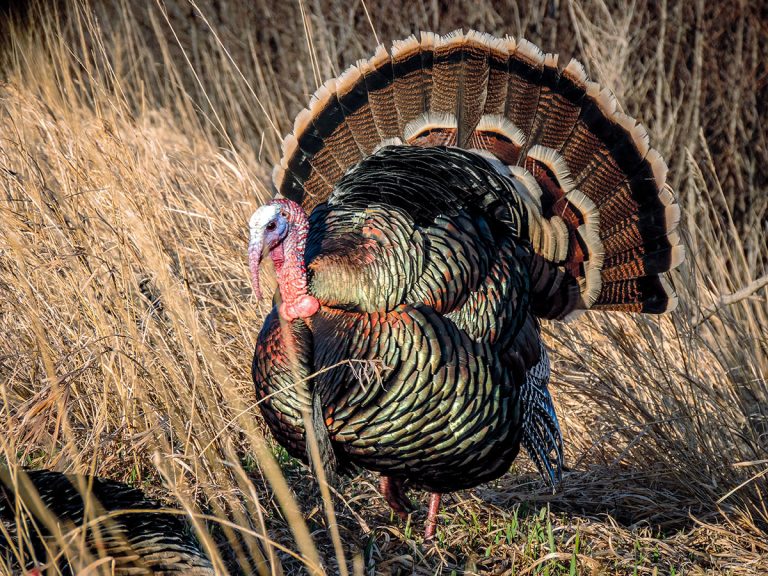Chasing spring gobblers with a shotgun is contagiously fun, but nothing beats the thrill of arrowing a gobbler at 10 yards or less. Here’s how to do Spurs at Spitting Distance:
As I scampered toward a small clover field that has produced many gobblers in previous years, I reveled in the perfect conditions: The mid-May temps were nice and warm with no wind, and the chirps and screeches of crickets and spring peepers created the only noise pollution. Dawn was imminent, so I hurried to my predetermined setup location.
As I slowly removed my ground blind from its carrying bag, a gobble interrupted the crickets and the frogs. Then another. And another. Then two more. I positioned my blind, placed the decoys 8 yards away and scurried back to settle in as at least four different toms, maybe five, gobbled incessantly. I was virtually in the middle of them and couldn’t wait to watch the gobbler parade unfold shortly after dawn. I made a few soft calls, and the gobblers responded promptly.
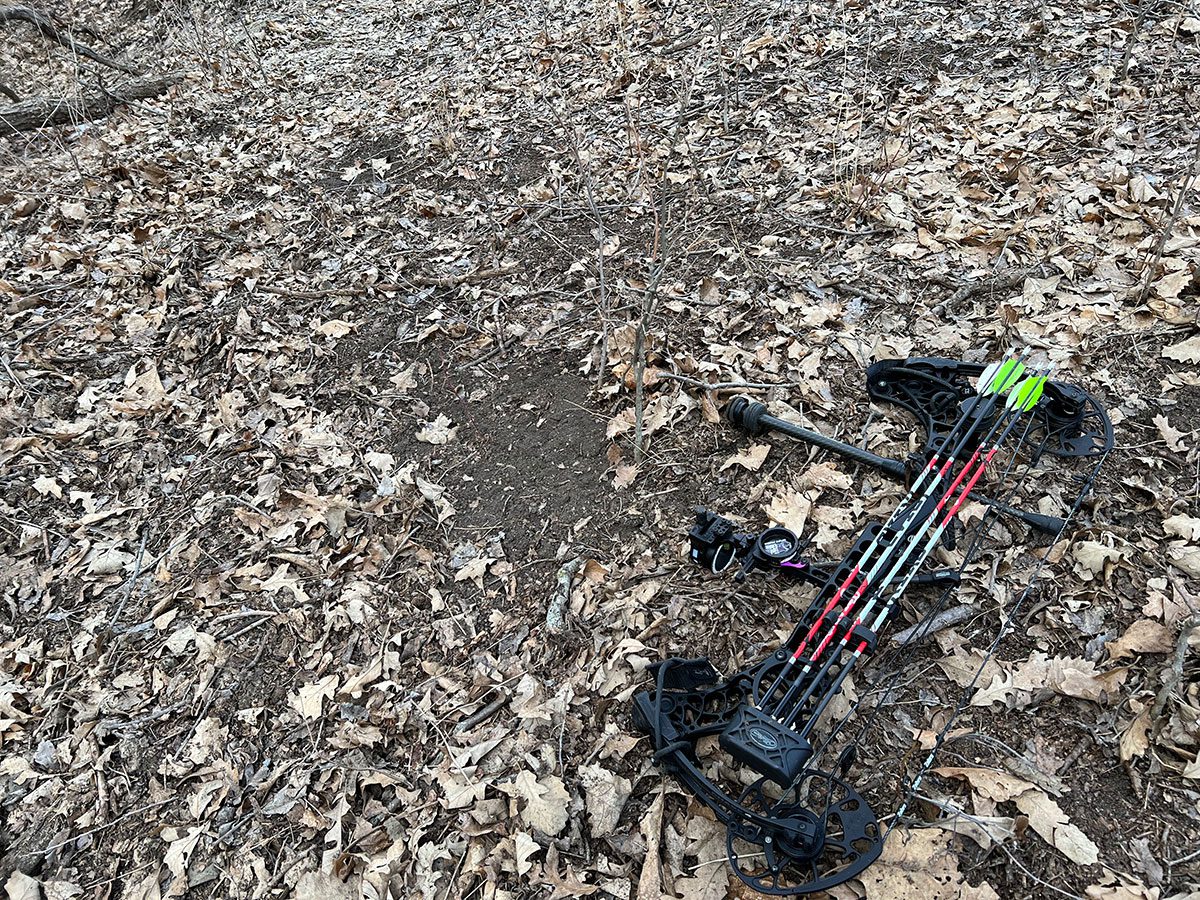
When daylight came, the birds quieted down, which meant they were on the ground and entertaining hens or heading my way. I waited for a few moments, expecting at least one gobbler to enter the clover field. An hour passed, and only one gobbler made an appearance in the timber just off the clover field. I called to him, but he faded away.
Meanwhile, another tom fired up straight south about 120 yards away. I called periodically for a few minutes, and he answered consistently but from the same exact location. That meant he wasn’t coming any closer. So, I quit calling and let his curiosity build.
About 10 minutes had passed when I heard dead goldenrod stalks on the ground outside of my blind cracking under the weight of 20 pounds of thunder. I grabbed my Mathews Lift bow. Sure enough, I could see a big-bearded tom through my Primos SurroundView 270 blind wall slowly approaching my hen decoys in half-strut.
I drew my bow just before he entered my shooting window. Once the sharp-spurred gobbler was 8 yards away next to the decoys, I whopped him. He collapsed just 10 yards beyond the decoys. He’s one out of dozens of gobblers that I’ve arrowed at less than 10 yards, and the feeling hasn’t worn off yet despite all of my success. Sound like something you want to try? Read on!

Bowhunting Turkeys
Probably the biggest fundamental difference between bowhunting turkeys and chasing them with shotguns is that you must get the birds to come close when bowhunting. Yes, modern bows in skilled hands can and do kill turkeys at distances out to and beyond ethical shotgun ranges, but I believe anyone guided by ethics must strive for a top-pin shot since a turkey’s vitals are so small. I’d rather have a gobbler within spitting distance than at 20 yards. Let’s discuss some ways to get that opportunity and then finish with how to capitalize on it.
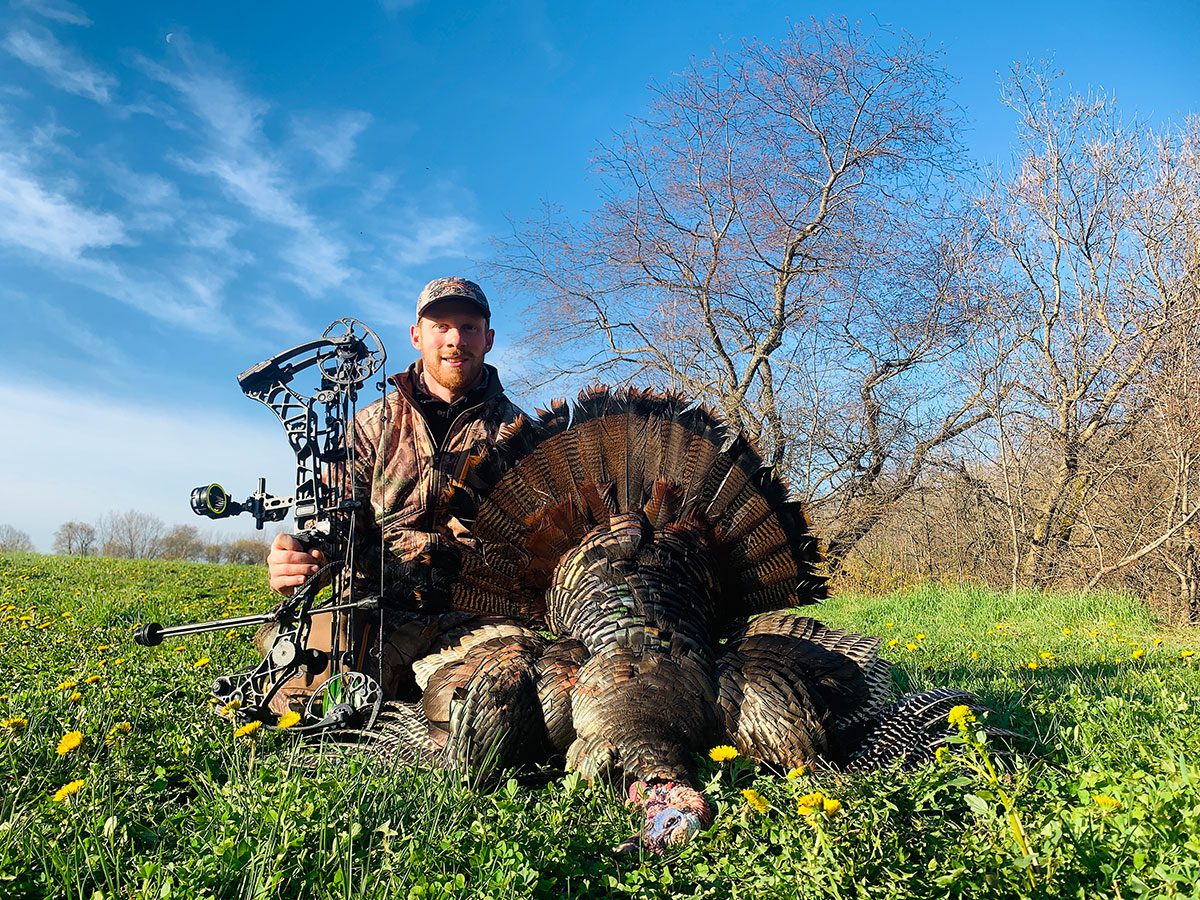
Create Killer Setups
In 22 years of bowhunting turkeys, I’ve found that the best way to get a tom to fully commit to decoys placed 10 yards away or less is to create a convincing setup. The best way to do that is to position yourself in a specific location — I’m talking about a 20-yard-by-20-yard patch of real estate — that turkeys already daily frequent.
Precise scouting is the best way to identify said location. My preferred scouting tactic is driving roadways and glassing, which has little impact on birds, especially when compared to on-foot scouting. Plus, seeing birds in real-time rather than relying on the historic signs (droppings and scratch marks) they’ve left behind is hugely advantageous. Often, birds keep a similar routine for at least a few straight days if not spooked by you or other hunters. So, when you see a tom in a specific location, it’s because he is comfortable there, and he’ll likely be there again.
Positioning your setup exactly where a gobbler already spends time boosts your odds substantially, especially if he is accompanied by hens. A tom won’t likely run 200 yards away from his hens to come to your calling and decoys, but if you’re hunting where the flock already spends time, the tom won’t even have to leave his hens to come to your decoys. In a setup such as this, your odds of an ultra-close encounter skyrocket.

What If I Haven’t Scouted or The Turkeys Are Unpredictable?
Now, if you haven’t scouted or you’ve found the turkeys you’ll be hunting to be unpredictable, you still have to create a deadly setup. How? Well, understand that visibility is practically everything to a gobbler. Eyesight is his number one defense mechanism, and he relies heavily upon it.
Knowing that, I always look for the highest point in the vicinity to set my decoys. That goes for timber and field settings alike. I want my decoys to be visible from long distances, especially when I’m pairing an aggressive jake decoy with a hen. I want toms to be able to size up my jake from a distance, become jealous and then come running. I try not to make tight setups with a jake decoy because not every tom is willing to fight. A tom coming to a hen call that steps out 15 yards from a jake decoy might tuck tail and run because he wasn’t expecting conflict, nor was he able to size up the threat from a distance.
On the rare occasions that I use only hen decoys, I still generally set up in areas with great visibility where toms can see the decoys from many different positions. However, it can be effective to make tight setups with limited visibility when hunting over a hen decoy or two. Essentially, you’re calling the tom to within bow range before he’ll be able to see your hen decoys. The trouble is that not every tom will waltz right up to your decoys, and thus he might not offer a clear shot. Sometimes toms will stop where they see the decoys, then strut back and forth while waiting for the hen(s) to join him. The decoys don’t move, and the tom loses interest and fades away without offering a clear shot.
If I could only bow hunt turkeys for one more day, I’d choose a high-visibility location and plant an aggressive jake decoy next to a hen decoy. For me, this type of setup has yielded the highest percentage of success for pulling toms within 10 yards away or less.
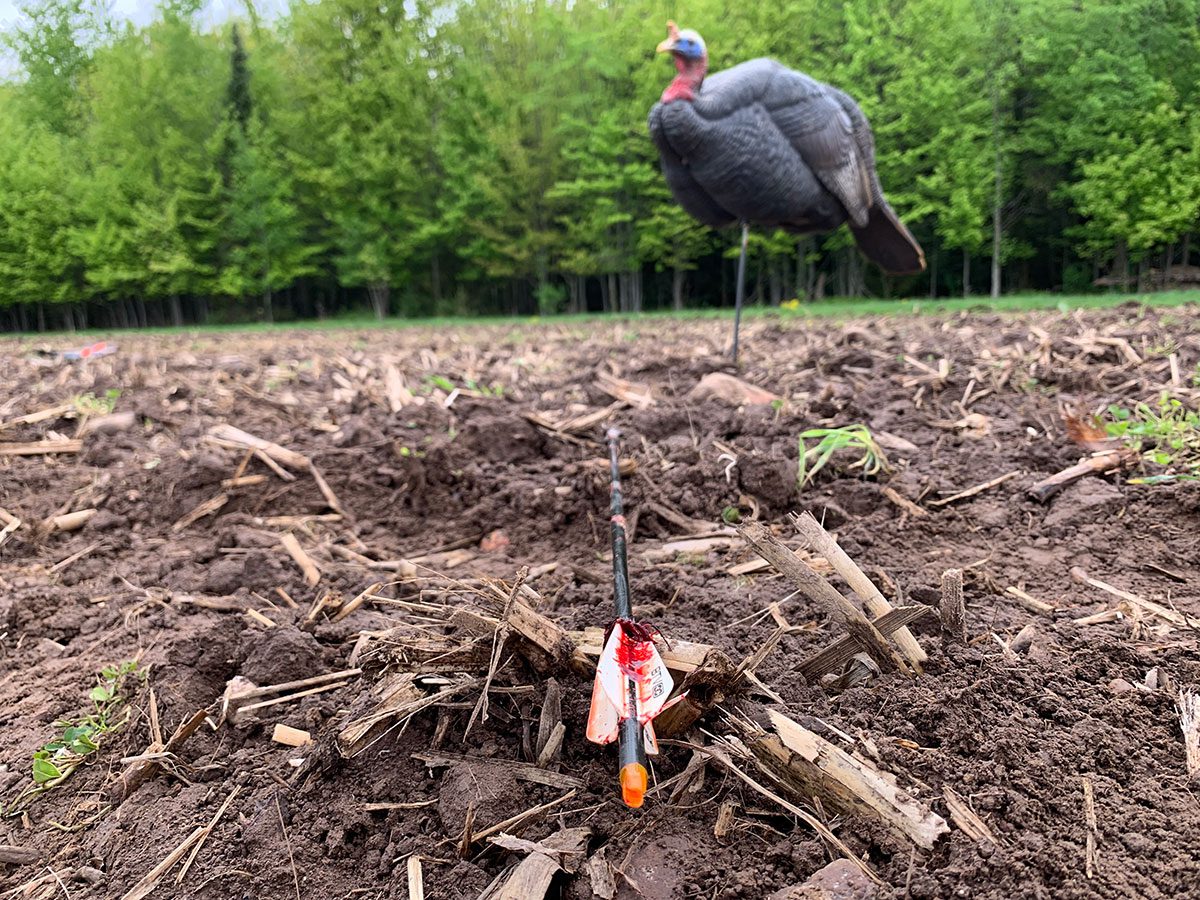
Get Real
With a shotgun, there are many ways to get within 40 yards of a gobbler. The reality is that if you want to consistently get a 10-yard shot with your bow, you have to hunt over decoys set 10 yards or closer. The only other realistic way to get within 10 yards is to create an ambush with no decoys at a location a tom frequently visits or travels through. This style has low odds, and the encounter won’t be nearly as intense as one in which the tom comes storming in on a jake decoy. Plus, he’s likely to be on the move, making for a difficult shot.
I’ve used several different decoys, but the ones that look like real turkeys get unparalleled results. My personal favorites are made by Dave Smith and Avian-X. My aggressive jakes have been struck countless times because gobblers totally believe they’re real. Even after they thump the decoy, they stick around and keep beating it up. A gobbler pummeling a decoy 10 yards away is the pinnacle encounter for a turkey bowhunter, and a realistic jake makes it possible.
I’ve said this in other articles, and I’ll say it again here: I used inexpensive foam and rubber decoys when I started turkey hunting, and rarely did gobblers come all the way in. Most hung up beyond the decoys, either resulting in longer shots or no shots at all. Buying expensive, realistic decoys back in 2010 immediately increased my archery success by a landslide.
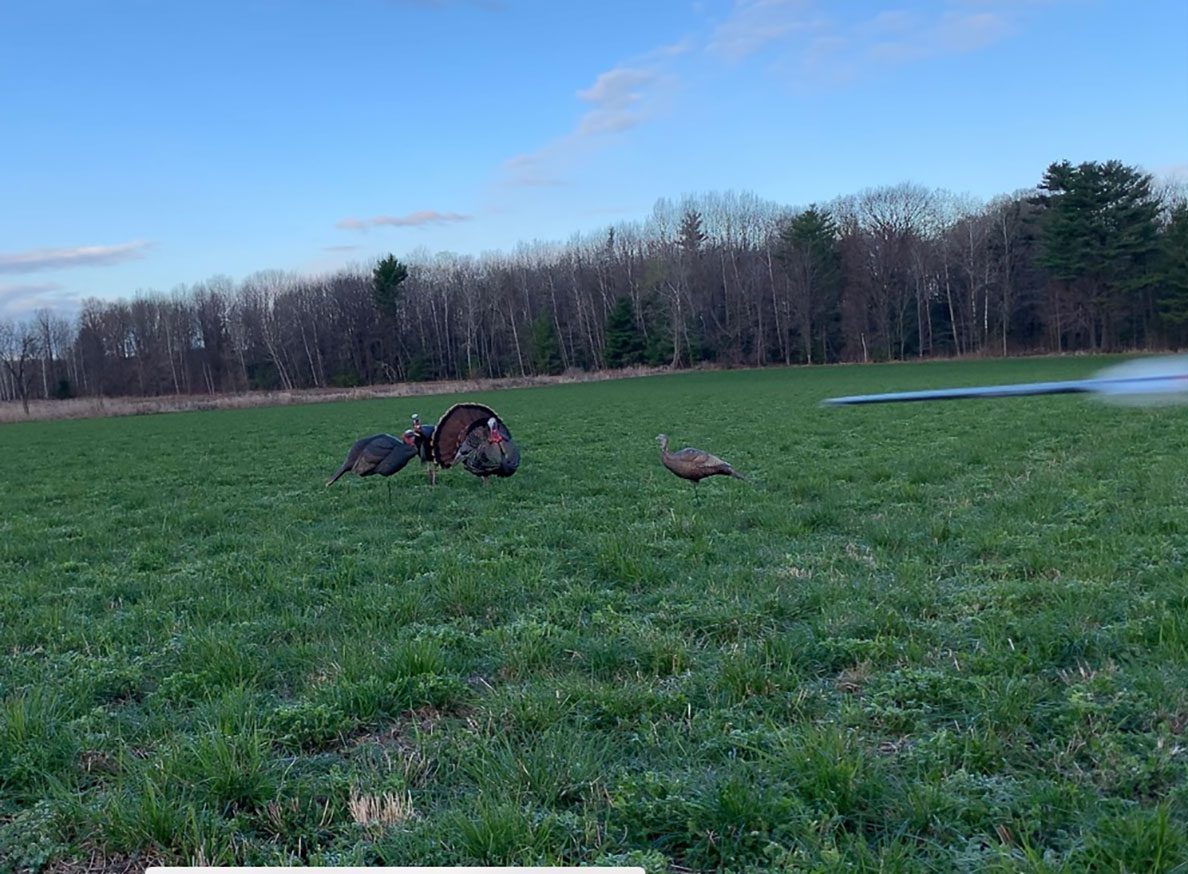
Close the Deal
If you and I were practicing with our bows for turkey season and I set a strutting tom target 8 yards away, perhaps you’d say, “That’s too easy.” A turkey target at 8 yards is a slam-dunk shot for almost any bowhunter, but I’m speaking from experience when I say that a live turkey at 10 yards or closer isn’t a guaranteed turkey dinner. The downside to getting a bird in so close is that it’s easy to rush the shot because it seems like a piece of cake. I’ve done it, and I’ve watched others do it, too.
My advice? Slow down! Even after doing this for 22 years, I still have to remind myself to slow down. A strutting turkey 10 yards away looks huge and impossible to miss. But, the kill zone (heart and lungs) is about the size of a baseball. And while most people can easily hit a baseball at 10 yards or less, that baseball-sized kill zone can be difficult to identify amidst all of those feathers. Add to that the fact that toms are usually moving and turning as they present shot opportunities, and that baseball-sized target becomes stupidly easy to miss.
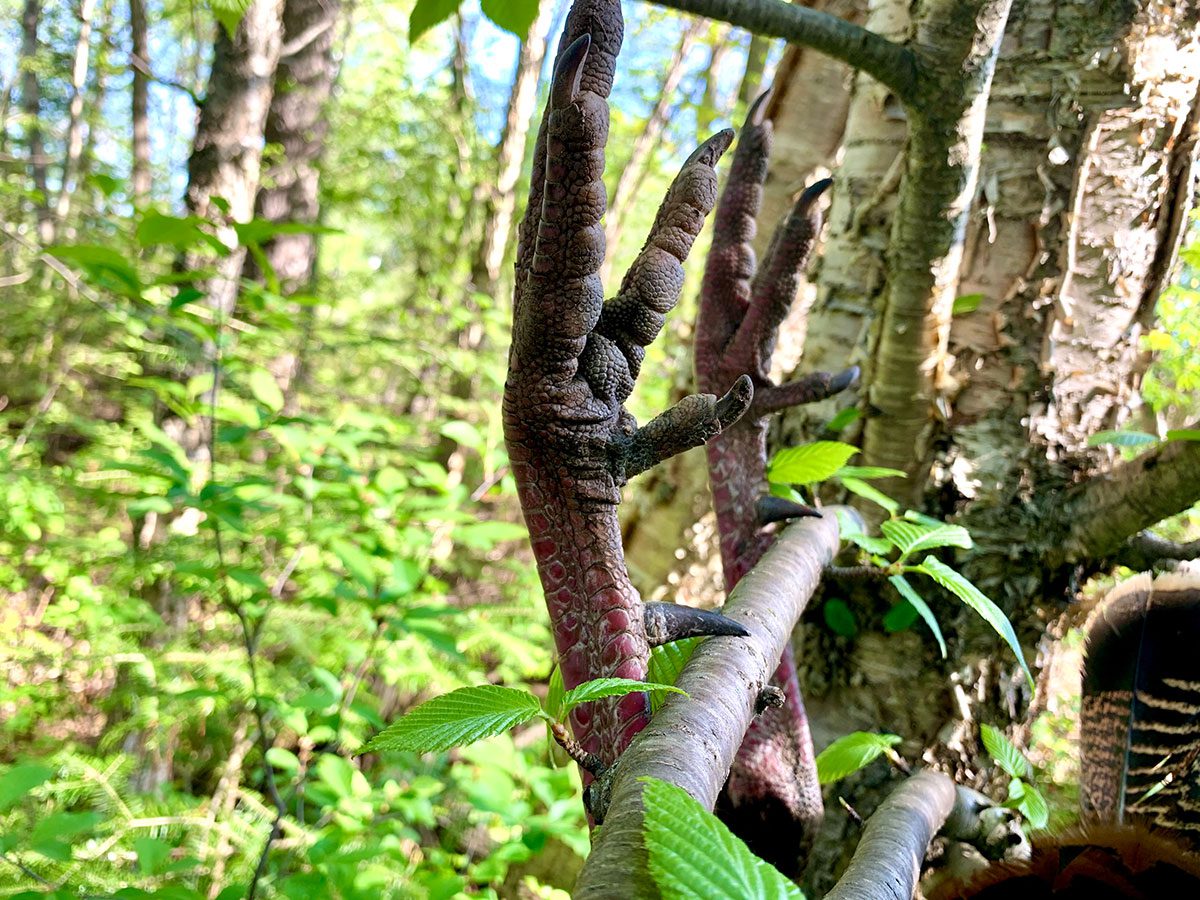
A tom confronting a jake decoy can be a blur. The jabs and kicks are sudden and unpredictable. Case in point. Once, my wife and I decoyed a tom into about 8 yards. He was standing next to the jake decoy facing directly at our blind. Becca buried her sight pin on his chest between his waddles and beard, and while the shot broke perfectly, the tom lunged at the decoy at the exact moment that she released. The arrow flew true, but the tom had moved several inches, and the broadhead skimmed this breast and shaved off feathers.
Let that be a lesson. If a tom is completely fixated on the jake decoy, let him jump around and beat it up. Wait to shoot until it is obvious that he has settled down and won’t be making any sudden movements. In a decade of turkey hunting, you might have one or two toms that spook after hitting the decoy initially, but most just keep beating it up, giving you time to slow down and make your shot count.
Before we conclude, I urge you to shoot your bow at 10 yards, 6 yards and even 3 yards. You have to learn how to aim in order to hit where you want. At 3-5 yards, I use my 40-yard pin, and the reason is that my arrow hasn’t hit its peak trajectory at that range. Twice I’ve made the mistake of aiming with my top pin on 4-yard shots, and although I recovered both gobblers, I hit them lower than I intended.
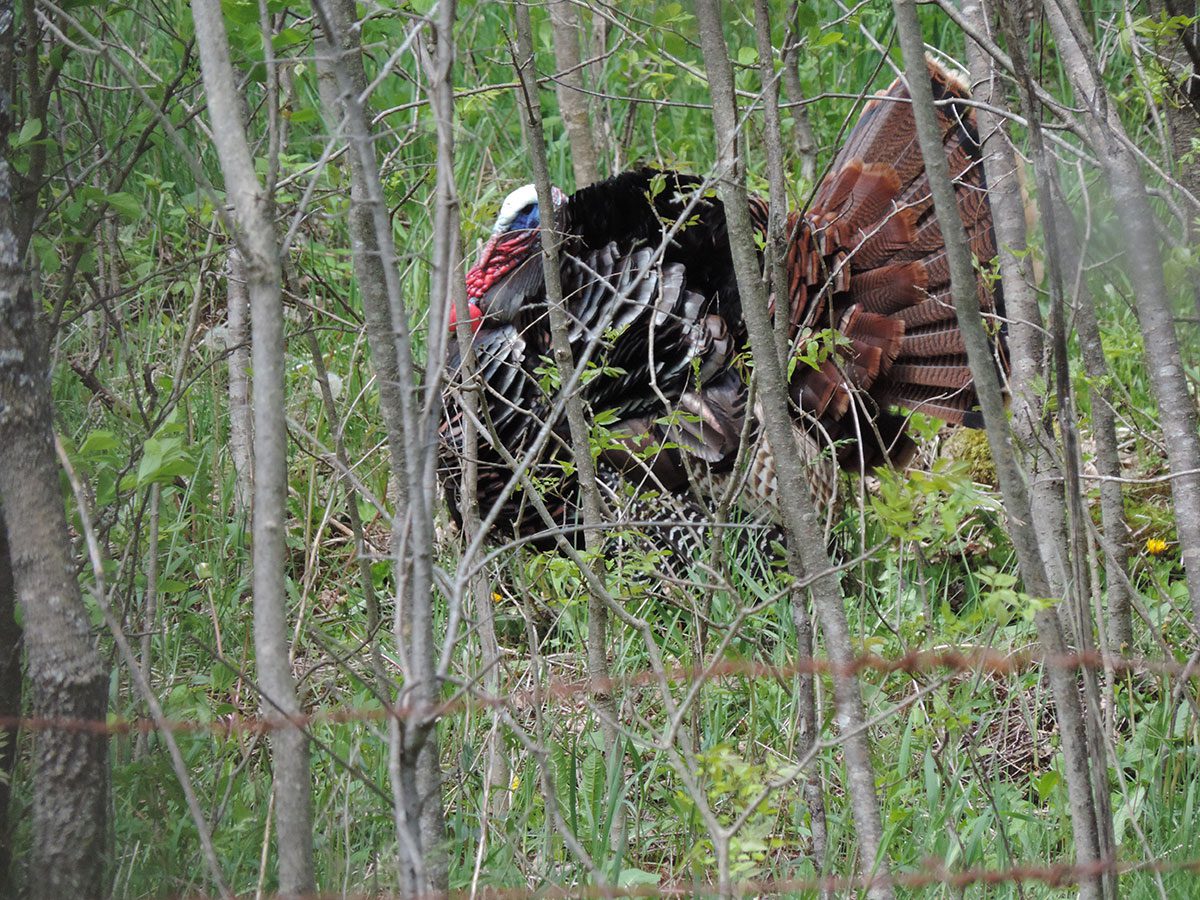
Summary
As I said earlier, there are many ploys that a shotgun hunter can use to get within 40 yards of a gobbler, but a bowhunter who wants a 10-yard encounter is quite limited. I’ve found the recipe to getting shots like this on an annual basis is identifying the exact locations that birds use daily. If I haven’t scouted or birds aren’t patternable, I’ve had lots of success with setting up on a high point with lots of visibility. Regardless, I almost always put a realistic jake decoy next to a realistic hen decoy.
This all might sound very simple but let me assure you that it has yielded dozens of archery gobblers at 10 yards or less. I’d rather lure a gobbler into 5 yards than shoot him at 20 yards. Experience it for yourself, and I believe you’ll agree that there’s nothing like spurs at spitting distance.
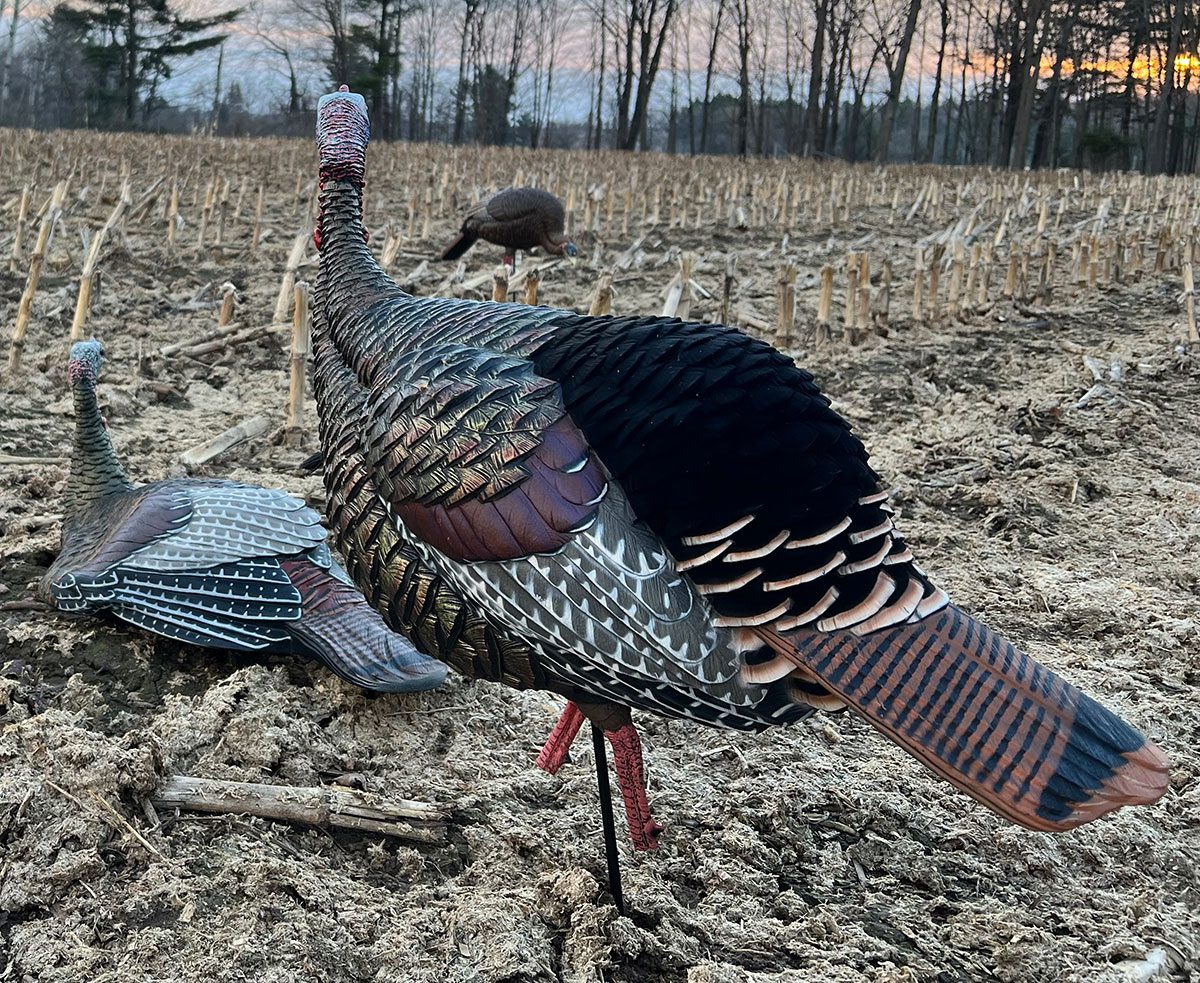
Read other Stories on Bowhunting Turkeys:
Turkey Hunting with a Crossbow
Per our affiliate disclosure, we may earn revenue from the products available on this page. To learn more about how we test gear, click here.



